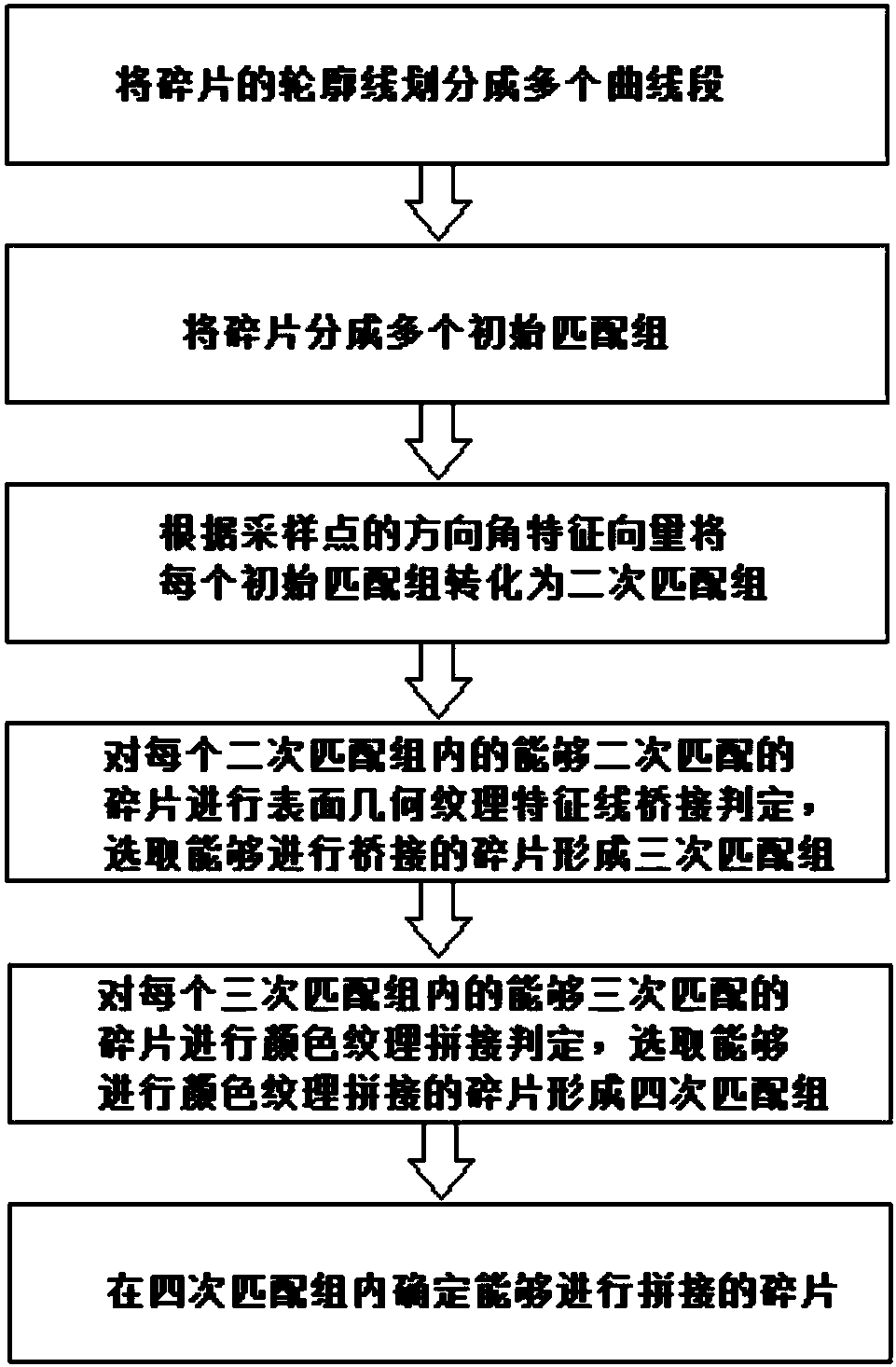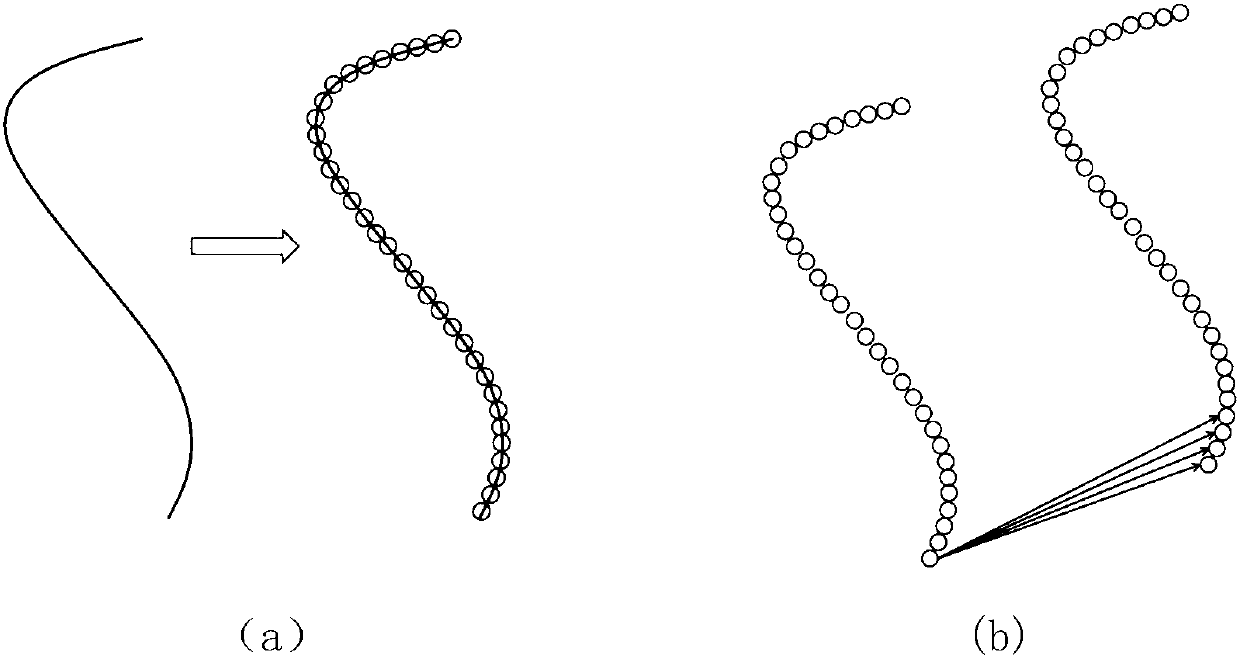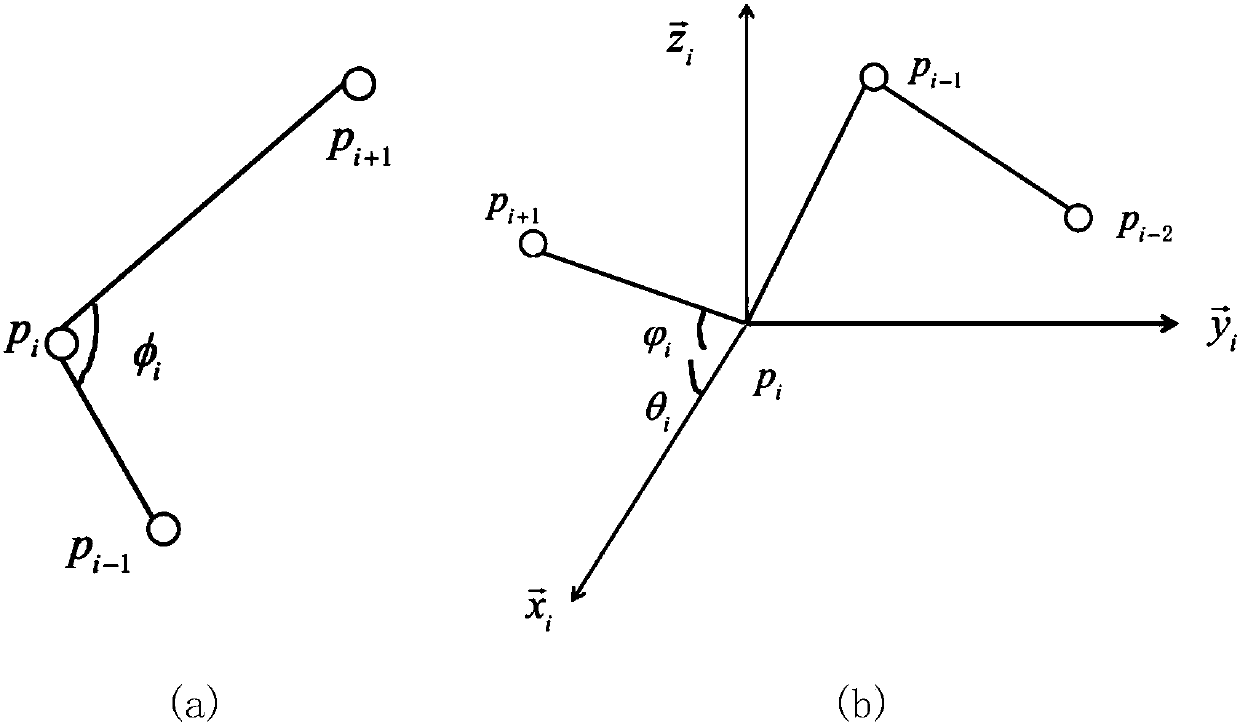Automatic culture relic fragment splicing method based on adaptive neighbor matching
An adaptive neighborhood and automatic splicing technology, applied in image data processing, instruments, computing, etc., can solve the problems of relying on the integrity and accuracy of geometric information, and the failure of cultural relic fragments, so as to shorten the restoration period of cultural relics and improve the quality of cultural relics. The effect of repair efficiency
- Summary
- Abstract
- Description
- Claims
- Application Information
AI Technical Summary
Problems solved by technology
Method used
Image
Examples
Embodiment Construction
[0045] The automatic splicing method of cultural relic fragments based on adaptive neighborhood matching of the present invention adopts a coarse-to-fine (Coarse-to-Fine) matching framework, such as figure 1 As shown, the adjacency relationship of fragments is determined step by step. The information contained in the fragments includes contour lines, surface geometric textures and surface color textures. The surface geometric textures are represented by surface geometric texture feature lines. The present invention effectively integrates the above information to realize automatic splicing of fragments. See figure 1 , including the following steps:
[0046] Step 1: Uniformly sample the contour lines of all fragments to obtain discrete sampling points, which contain color information; divide the contour lines into multiple curve segments according to the color information of the sampling points, and adjacent curve segments on the same contour line The color information of the s...
PUM
 Login to View More
Login to View More Abstract
Description
Claims
Application Information
 Login to View More
Login to View More - R&D
- Intellectual Property
- Life Sciences
- Materials
- Tech Scout
- Unparalleled Data Quality
- Higher Quality Content
- 60% Fewer Hallucinations
Browse by: Latest US Patents, China's latest patents, Technical Efficacy Thesaurus, Application Domain, Technology Topic, Popular Technical Reports.
© 2025 PatSnap. All rights reserved.Legal|Privacy policy|Modern Slavery Act Transparency Statement|Sitemap|About US| Contact US: help@patsnap.com



